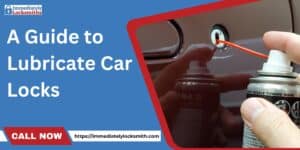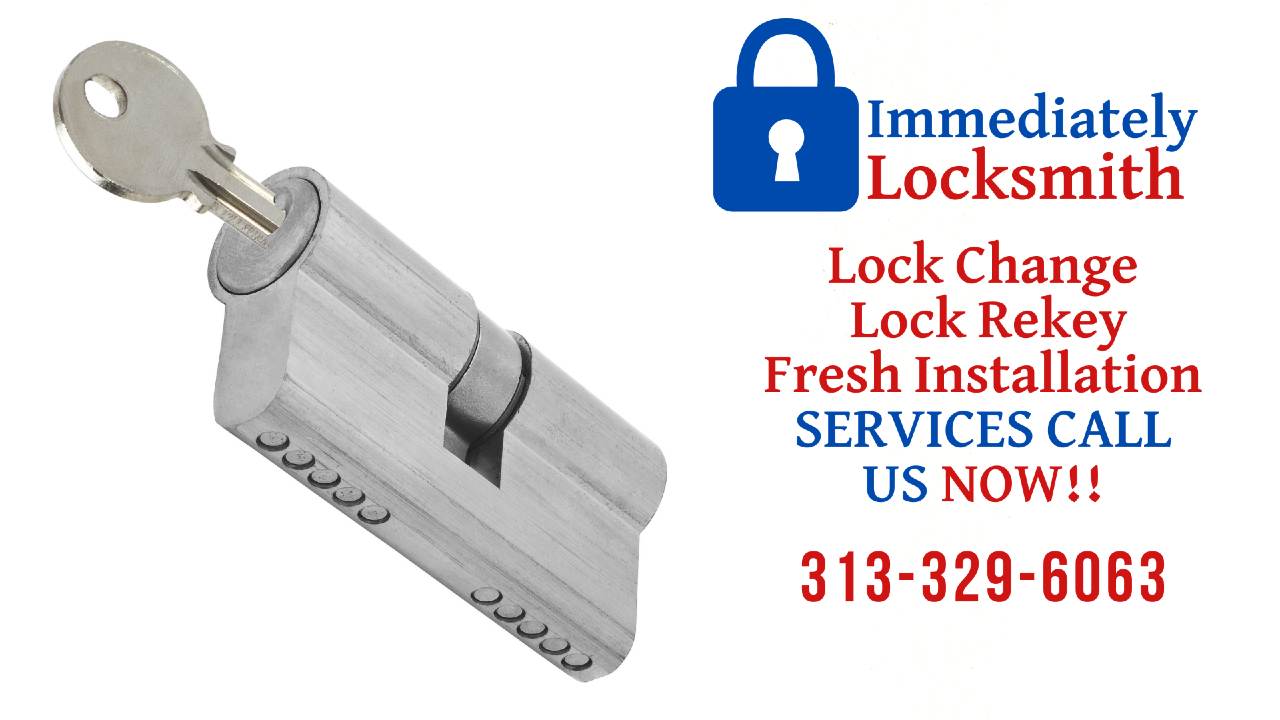
If you are facing a problem related to Open a Tool box without a Key then this guide will help you to resolve such a problem. If you misplace the key of a locked toolbox then there are several ways to regain the access without causing significant damage. There are some practical and safe methods to find toolbox key replacement as well as some precautions and tips to avoid damaging the box.
Methods to Open a Tool box without a Key
Using a flat head Screwdriver
Using a flathead Screw is one of the simplest methods to open a toolbox without having a key. If the lock mechanism is basic, then the idea is to use the screwdriver as a makeshift key, focusing on manipulating the lock. Insert the flathead screwdriver into the keyhole. Make sure to gently put the pressure while turning it in the direction that the key would typically turn. Wiggle the screwdriver slightly to engage the pins of the lock.
It is the kind of method that is effective on simple locks, usually when the toolbox or padlock latch does not have complex security features. Make sure not to force the screwdriver too much, as it could break inside the lock and damage it.
Picking the Locks for a tool box with a Paperclip or Bobby Pin
When it comes to picking the lock, it is a popular method for opening a simple toolbox lock without a key. This technique relies on the manipulation of the pins that are inside the lock. This technique totally relies on the manipulation of pins inside the lock. It is important to straighten the bobby pin or paperclip, leaving the small hook at one end. It is important to insert the hooked end into the lock’s keyhole and gently push upward to feel for the pins. Applying the light tension to the lock with a second paperclip and lifting each pin individually.
Apply pressure and move the pins to feel the lock turn. This method requires patience and dexterity to carefully manipulate the pins without any kind of excessive force. It is important to focus on the locking mechanism in the right way.
Using a Pliers and Flathead Screwdriver (For Padlocks)
Using a flathead screwdriver to open a padlock on the toolbox is a good approach when you do not have the key, especially for older padlocks or less sturdy ones. This method relies on leveraging the tools to manipulate the lock mechanism. Positioning the screwdriver has a focus on inserting it into the keyhole of the padlock. The aim is to apply some torque to lock the cylinder.
Using Lock Picking Tools
Using lock-picking tools is one of the effective and precise methods for opening a toolbox without a key. Lock-picking tools consist of two important parts, a pick and a tension wrench. The tension wrench applies the rotational pressure to the lock while the pick manipulates the pins that are inside the locking cylinder. Insert the tension wrench into the keyhole bottom. Apply slight pressure to mimic the turning motion of a key. Use the pick to start to push each pin up one by one. Turn all pins, and turn the tension wrench to open the lock. The lock-picking tools provide a safe method for locks for a toolbox.
Lock Drilling
When it comes to drilling the lock, it is the last resort to open a toolbox when all of the other techniques do not work. It involves using a power drill to destroy the internal components of the lock, making it unusable and allowing the box to open. Use a drill bit that is smaller in size as compared to the keyhole.
A high-speed steel bit works well for all of the metal locks. Position the drill at the top of the keyhole where the pins are located. Slow and steady drill through the pins. Once the pins are destroyed, the lock will no longer function. It is important to turn the lock through using a flathead screwdriver on the core of the lock to turn the cylinder open.
Maintaining Tool Box Locks
Maintaining the locks on your toolbox is a necessity as it helps to ensure their reliable performance. Proper maintenance not only helps to prevent lockouts but also enhances functionality and security. The need is to maintain the toolbox locks by regularly lubricate them with a lock-safe oil to make sure that the operation is smooth and rust can be prevented. There are some elective tips that need to be followed:

Regular Lubrication
One of the most important aspects of lock maintenance is its regular lubrication. With time, the internal components of a lock can become seized or stiff due to dirt, dust and friction. To take care of such problems, make sure to apply graphite lubricant or silicone spray to the lock mechanism. Graphite is effective as it does not attract any kind of direct dust that helps to ensure that lock works in the right way.
Keeping it Clean
Grime, debris and dust can accumulate in the lock, impairing its functions. Make sure to clean the lock, which is important to prevent any kind of buildup that causes the mechanism to jam. Use compressed air to blow out dust particles that have entered the lock. Similarly, use a soft brush that can be used to remove the dirt without damaging the lock.
Checking for damages
Regular inspections of your locks are essential for early detection of any issues. When the key is turned, it is important to check for signs of any kind of damage or wear including rust, cracks or stiffness. Rust can usually weaken the mechanism of lock whereas the crack indicates that there are structural issues. Stiffness during turning the key also suggests that there is internal damage or dirt. Addressing such kinds of issues through lubrication or cleaning helps to prevent the failure of lock and ensure that the toolbox remains functional and secure.
Testing the Lock
Lock testing is a way of regularly testing the lock that can help you to gauge its performance. Closing and opening the lock several times to ensure that it operates in a smooth way. Pay attention to any unusual sound, such as sticking or grinding, which indicates a need for maintenance.
How to Prevent Future Lock Issues
Preventing future lock issues after opening your toolbox is important to avoid repeating the frustrating experience. There are some tips that help to ensure that you do not get locked out.

Storing the Spare Keys Securely:
Make sure to keep a spare key in a memorable spot like a keychain or drawer that is easily accessible. Avoiding placing it in obscure places where it can be misplaced or forgotten.
Upgrading the Lock
Consider upgrading the lock to a combination or digital lock. These options eliminate the need for a physical key, reducing the chances of being locked out due to the lost or misplaced keys.
Lubricating the Lock
With time, locks can become rusty or stiff leading to the issues. Applying a lock-safe lubricant occasionally keeps it functioning smoothly. Regular maintenance can prolong the lock’s life and prevent it from jamming.
Keeping Tools Organized
If the toolbox came with the built-in-lock, make sure to store the key inside the toolbox for a safe to know about the location. By taking these preventive steps, you can avoid future lockouts and ensure that your toolbox remains accessible whenever needed.
FAQs
What type of lock is on a toolbox?
When it comes to determining the type of toolbox lock then it may be a keyed lock, cylinder lock or a combination lock. The type of lock that has been used in the toolbox is depending upon the value and size of items that are secured along with the level of security that is desired. For example, a small toolbox having basic tools requires a combination padlock or keyed lock that can be used for making things secure in a toolbox.
How do I get into my locked toolbox?
If your toolbox has more of a filing cabinet lock, you can find a thin metal tool that you can insert the metal tool, jiggle it around inside, and continuously rotate it inside so you can get to lock open. Coming in as one of the most simple and easiest solutions, you can pick the lock to your locked toolbox.
How do I choose the best lock?
Evaluate the security needs of your home. For high-security requirements, opt for locks with robust mechanisms like deadbolts, multi-point locking systems, or biometric recognition. Look for locks made from strong materials such as steel or brass, which are more resistant to tampering and break-ins.
How to open tool box if lost key
If your toolbox has more of a filing cabinet lock, you can find a thin metal tool that you can insert the metal tool, jiggle it around inside, and continuously rotate it inside so you can get the lock open. Coming in as one of the most simple and easiest solutions, you can pick the lock to your locked toolbox.
How do you open a broken key lock box?
Opening a broken key lock box can be done via placing a pry bar or crowbar between the frame and door of the lockbox then pressing down to force it open. Using the cutting tool with a right angle helps to open the toolbox without any issue. It should be done in a careful manner so that the lockbox remain in intact.
Conclusion
Maintaining accessible and secure tool storage is important for any tool user. Understanding the types of locks available and different methods for opening the toolbox without a key is important. Regular maintenance of locks is required to ensure that the tools remain secure while being easily accessible when needed.
It is necessary to look for the issues that are in the way related to the maintenance of the toolbox and finding the key replacement in the right way. It is important to take care of the future issues and ensure to have a spare key to resolve the problem.




